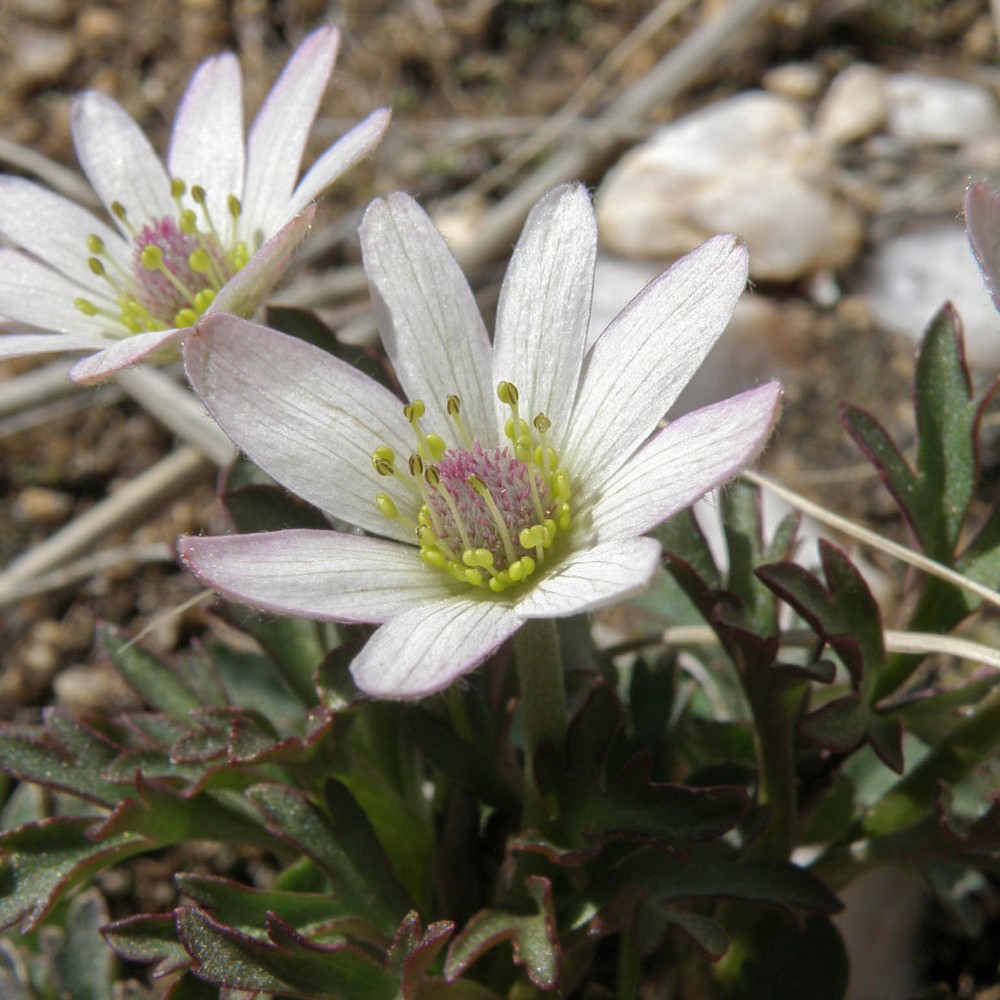Desert anemone
(Anemone tuberosa)

Description
Anemone tuberosa, the desert anemone or tuber anemone, is a herbaceous species of flowering plant buttercup family Ranunculaceae. Plants grow 10 to 30, sometimes 40 cm tall, from a woody-like tuber shaped like a caudex. Plants with 1 to 3 basal leaves that are 1 or 2 times ternate. The basal leaves few with long petioles and deeply 3-parted with leaflets lacking stems or rarely with a stalk. Plants flowering early to late spring with the flowers composed of 8 to 10 sepals normally white or pink colored, 10 to 14 mm long. The plants produce one peduncle with one solitary flower or 2-5 flowered cymes. Fruits in heads fusiform in shape, with 7–20 cm long pedicels. Fruits called achenes measure 2.5-3.5 mm long and 2–2.5 mm wide with a rounded outline and flat in shape, densely woolly, not winged also with straight 1.5 mm long beaks. Anemone tuberosa is native to south central western North America mostly in Nevada and New Mexico and Northern Mexico but also west to California and East to Texas. This spring flowering plant is found on rocky slopes and along stream banks. Anemone tuberosa is part of a species complex that includes 6 to 9 species native from south western and central USA to South America For the most part all produce tubers or caudex-like tubers. Anemone is a genus of flowering plants in the buttercup family Ranunculaceae. Plants of the genus are commonly called windflowers. They are native to the temperate and subtropical regions of all continents except Australia, New Zealand and Antarctica. The genus is closely related to several other genera including Anemonoides, Anemonastrum, Hepatica, and Pulsatilla. Some botanists include these genera within Anemone. Anemone are perennials that have basal leaves with long leaf-stems that can be upright or prostrate. Leaves are simple or compound with lobed, parted, or undivided leaf blades. The leaf margins are toothed or entire. Flowers with 4–27 sepals are produced singly, in cymes of 2–9 flowers, or in umbels, above a cluster of leaf- or sepal-like bracts. Sepals may be any color. The pistils have one ovule. The flowers have nectaries, but petals are missing in the majority of species. The fruits are ovoid to obovoid shaped achenes that are collected together in a tight cluster, ending variously lengthened stalks; though many species have sessile clusters terminating the stems. The achenes are beaked and some species have feathery hairs attached to them.
Taxonomic tree:







